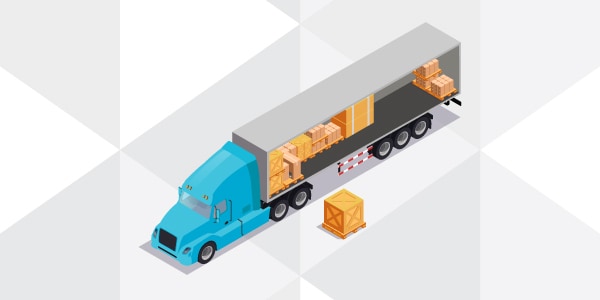
How do you know you’re getting a good rate on the LTL freight you ship? It all comes down to the freight class of what you are shipping. What is freight class? How is it measured? Why is it important in the shipping industry? It seems like a complicated issue, but once you understand the basics of freight classification it becomes a much easier concept to grasp. It’s important to get the freight class of your freight correct the first time. Doing so will allow you to negotiate the best rates for your LTL shipping.
These are the basics of freight class and how you can use them to create a more cost-efficient LTL plan.
What is freight class?
Freight class, also known as National Motor Freight Classification (NMFC), is a classification standard that assists in the grouping of freight for shipping. It was developed by the National Motor Freight Traffic Association and is used as a pricing metric for carriers, especially in LTL shipping.
Freight classes are important for LTL shippers because of the nature of the shipping method. LTL shippers haul freight for multiple clients at the same time, and this freight is often a mixture of items that weigh different amounts and take up different amounts of space on a trailer. In order to create a more predictable pricing standard for this type of shipping, freight classifications are used to group similar types of freight together in different price levels, or classes.
How are freight classes measured?
Determining the freight class of a piece of freight takes many factors into account, including these items:
- Density
- Ease of handling
- Stowability
- Liability
Why not simply use size and weight? Because they are not the most accurate ways to calculate how much it will cost a carrier to haul the freight.
About Density
Density (how much space the item takes up relative to its weight) is used because it accounts better for both the dimensions of the object and its weight. Not all large items are heavy, and not all small items are light. Carriers need to not only take into consideration what they can fit on their trailer, they also have weight limitations of their vehicle as enforced by the Department of Transportation. Freight density is measured in pounds per cubic foot (PCF). The lower the PCF, the lower the freight class.
About Ease of Handling
Ease of handling takes into consideration how fragile an item is, how irregular its shape, and if the item is hazardous or not, among other considerations. In short, what kind of special handling does the item need? How hard is it to load/unload? Will it need to be kept under certain conditions? Is it dangerous? All of these things will impact the freight classification and price of shipping an item.
About Stowability
Stowability refers to federal regulations in terms of what items can be hauled together. It’s linked to ease of handling in that it refers to the hazardousness and irregular shape of the freight. Some freight can be stacked, meaning carriers can carry more of it. Other types of freight cannot, meaning it will be placed into a more expensive freight classification because it takes up more (cubic) space in the trailer. Federal regulations and certain carrier policies will dictate what items can be transported together.
About Liability
Liability refers to many things:
- How likely the freight is to be targeted for theft (how often is it reported stolen?)
- How valuable the freight is
- If the freight is perishable
- Does the freight come with a high risk of damage?
- How likely is the freight to damage other items while in transit
All of these types of freight come with distinct liabilities that increase the risk of hauling them. The more liability that is associated with the items, the higher the freight classification will be.
Finding the right freight class
As of 2022, there are a total of 18 freight classes that range from Class 55 to Class 500. Class 55 is the lowest costing freight classification and generally refers to freight with a weight range of over 50 lbs (per cubic foot). Class 500 is the highest and most expensive class with a weight range of less than 1 lb (per cubic foot).
To estimate your freight class, follow these steps:
- Measure its dimensions in inches (length, width, and height) and multiply the numbers together to get the volume (in3)
- Convert to cubic feet by dividing the volume by 1,728. This will give you the volume in ft3
- Weigh the freight in lbs
- Divide the weight of the freight by the volume (in ft3) to get its density (PCF)
The equation to follow for density (PCF) is PCF = weight/ft3. Once you know the PCF, you can use the freight classification chart provided by the NMFC to find your estimated freight calculation. This will allow you to better plan for your LTL shipping in the future.
Find a 3PL to help
At King Solutions, we partner with shippers to help them optimize their LTL shipping through proper freight classification, and by linking them up with reliable carriers who offer competitive rates. We can help you calculate the proper classification of your freight the first time, helping you get it from point A to B with ease. Need help with LTL shipping or freight classification? Get in touch with us today to talk solutions!







 Joel Rice
Joel Rice